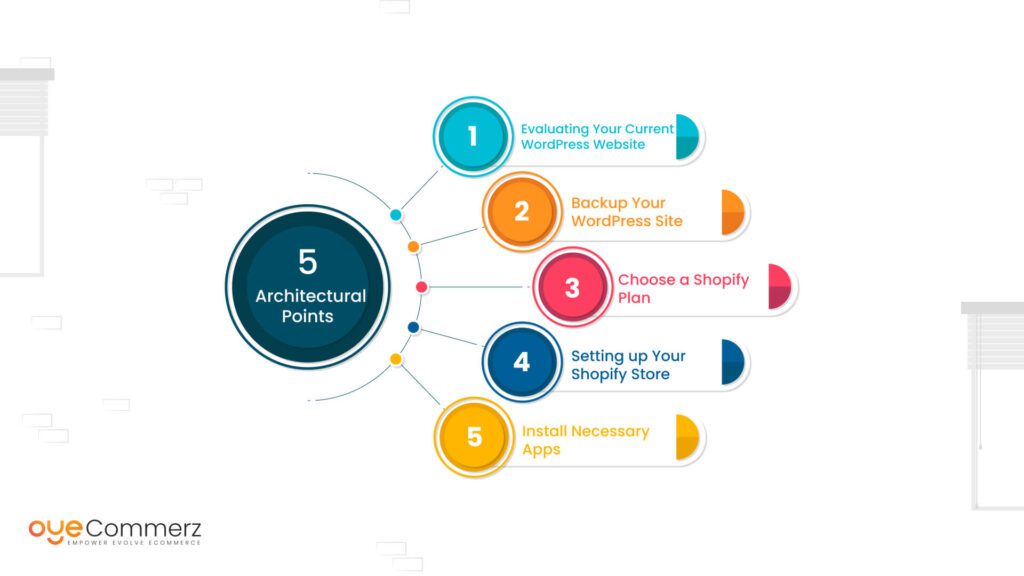Seamless WordPress to Shopify Migration: Your Ultimate Guide to E-commerce Success
Seamless WordPress to Shopify Migration: Your Ultimate Guide to E-commerce Success
Blog Article
Shifting from WP to Shopify marks an promising step toward optimizing your online store operations. As companies grow, selecting a solution that aligns with scalability, UX, and flexibility is essential. Shopify has emerged as a preferred choice for e-commerce professionals, offering superior adaptability, data protection, and ease of use. In this guide, we’ll explore why this migration is a game-changer, discuss the advantages, and share actionable steps to facilitate a smooth transition.
1. Why Migrate from WordPress to Shopify?
WordPress, paired with WooCommerce, continues to support countless e-commerce platforms. Nevertheless, as companies expand, issues like plugin dependency, security vulnerabilities, and complex setups can hinder growth. Shopify, specifically created for digital retail, eliminates these concerns with an comprehensive, intuitive platform. Statistics back this shift—Shopify hosts over 4.4 million websites globally, with a documented 10% boost to sales performance for numerous merchants after migration.
2. Key Benefits of Shopify for E-commerce Success
Shopify’s robust ecosystem is tailored for expanding brands. Its notable benefits include:
- Seamless Customization: Shopify provides over 80 professionally designed themes.
- Built-in Features: Capabilities such as Shopify Payments and integrated SEO save time and effort.
- Global Reach: Multi-currency support and localization features empower brands to reach global markets.
Additionally, Shopify delivers an uptime rate of 99.98%, guaranteeing your store is always operational.
3. Preparing for WordPress to Shopify Migration
Prior to starting the migration process, assess your existing setup. Review inventory details, client information, and SEO performance. Tools like Shopify’s Migration Kit or external tools can simplify this process. Develop a detailed strategy, ensuring all resources—product descriptions, media files, and articles—are ready for seamless import.
4. Data Migration: A Critical Step
Data migration forms the foundation for a smooth transition. When migrating from WP to Shopify, focus on:
- Product Information: SKU, item summaries, and categories.
- Client Information: Emails, order history, and custom fields.
- SEO Optimization: Preserve meta tags, URLs, and redirects to maintain Shopify theme customization search rankings.
Use apps like LitExtension to streamline data transfer while minimizing errors.
5. Customizing Your Shopify Store
After the move, personalizing your Shopify store helps it aligns with your business identity. Take advantage of Shopify’s intuitive page builder to create layouts with ease. Shopify's themes are mobile-responsive, ensuring a seamless user experience across platforms—a critical factor, since 74% of online shopping comes from mobile visitors.
6. Maintaining SEO During Migration
SEO is vital for maintaining your visibility during migration. Shopify excels in SEO with clean URL structures, preloaded features, and seamless blog integration. Make sure you:
- Set up URL forwarding for existing links.
- Optimize new pages with keyword-rich content.
- Leverage plugins like Plug in SEO to monitor performance post-migration.
7. Essential Tests After Migrating to Shopify
Once the migration is complete, conduct thorough testing.
Check: - Page load times (Shopify delivers faster speeds in contrast with WordPress).
- Functionality of payment gateways and checkout processes.
- Mobile responsiveness.
Testing ensures your store delivers a smooth shopping experience from the start.
8. Case Study of a Successful Migration
One such migration success story is Gymshark, a sportswear company that transitioned to Shopify. Post-migration, the company saw a 60% boost in mobile sales and significantly lowered site downtime. This showcases the capabilities of Shopify in driving e-commerce growth.
9. Overcoming Common Migration Issues
Migration is not without obstacles, such as information accuracy and reconfiguring custom functionalities. However, Shopify’s robust support and external professionals make overcoming these hurdles manageable. Collaborating with qualified Shopify developers helps guarantee a trouble-free transition.
10. Making the Switch: The First Step Toward Success
Migrating from WP to Shopify marks a forward-thinking approach to online retail. By addressing scalability, simplifying management, and enhancing Data migration to Shopify the customer experience, Shopify empowers businesses to thrive in challenging industries.
Final Thoughts
Switching from WordPress to Shopify offers a smart solution that can significantly boost your e-commerce success. With a well-structured strategy, the right tools, and expert support, you can unlock new growth opportunities.
Ready to make the leap? Let’s discuss how our Shopify migration services can revolutionize your online store. Contact us now, or consider: Is it time to seize Shopify’s advantages for your store?
 Report this page
Report this page